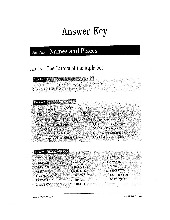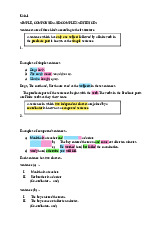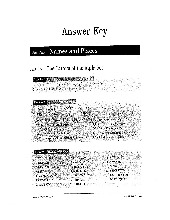



Preview text:
lOMoAR cPSD| 40342981
Question 1: Some people suggest that the government should spend money putting
more works of art like paintings and statues into towns and cities to make them
attractive places. To what extent do you agree or disagree? Ex.1:
There is an ongoing debate about whether governments should allocate (1) financial
resources to install more artworks in urban areas to enhance their appeal (2). While
some argue that this investment would beautify (3) cities, others believe there might be
more pressing (4) uses for public funds. This essay will examine both sides of the
argument before presenting my own perspective (5).
Proponents of public art argue that it can significantly enhance (6) the aesthetic appeal
of urban spaces. Paintings, sculptures, and other art forms can transform dull (7) areas
into vibrant, culturally rich environments. Moreover, public art can cultivate (8) a sense
of community identity and pride among residents.
On the other hand, critics argue that government funds could be better invested (9) on
more pressing urban issues. They contend that resources should be directed towards
improving essential (10) infrastructure, enhancing public services, or addressing social
problems like homelessness (11) and poverty.
In my opinion, while public art undoubtedly has its merits, it should not be a priority (12)
for government spending. I believe a balanced approach is necessary, where a modest
(13) portion of the budget is allocated to public art projects, but only after essential urban needs are met.
In conclusion, while public art can contribute (14) to the attractiveness of urban spaces,
it should not come at the expense of more vital (15) urban development priorities.
Governments should strive to find a balance between aesthetic improvements and
addressing the fundamental needs of their citizens. Ex2: 1.
The assimilation of aesthetic elements into metropolitan landscapes can catalyze urban metamorphosis. 2.
Public artistic installations can foster a sense of collective identity and civic
engagement among urban dwellers. 3.
Detractors postulate that allocating funds to artistic endeavors could undermine
more pressing socio-economic imperatives. 4.
The proliferation of public art can serve as a catalyst for tourism, thereby
invigorating the local economic ecosystem. 5.
Fiscal policy makers navigate the equilibrium between aesthetic enrichment and
pragmatic urban development initiatives. lOMoAR cPSD| 40342981 6.
The contentious nature of certain public artworks can engender polarization
within the populace and lead to societal discord. 7.
The inclusion of indigenous artistic talent in municipal projects can bolster the
local creative ecosystem and cultural capital. 8.
Strategically placed artistic installations can stimulate contemplative discourse on pertinent societal issues.
Ex3: 1-4 2-3 3-7 4-1 5-6 6-2 7-5 8-8 1.
The assimilation of aesthetic elements into metropolitan landscapes can catalyze
urban metamorphosis. This transformation extends beyond mere visual appeal,
potentially influencing social dynamics, economic vitality, and the psychological
wellbeing of inhabitants. It can redefine the city's identity and global positioning. 2.
Public artistic installations can foster a sense of collective identity and civic
engagement among urban dwellers. These installations often serve as focal points for
community interaction, catalyzing dialogues that bridge diverse social groups and
generations, thus strengthening the social fabric of the city. 3.
Detractors postulate that allocating funds to artistic endeavors could undermine
more pressing socio-economic imperatives. These installations often serve as focal
points for community interaction, catalyzing dialogues that bridge diverse social groups
and generations, thus strengthening the social fabric of the city. 4.
The proliferation of public art can catalyze tourism, thereby invigorating the local
economic ecosystem. Beyond direct economic benefits, this artistic draw can lead to
cultural exchange, fostering innovation and creativity in various sectors, ultimately
contributing to a city's global competitiveness. 5.
Fiscal policy makers navigate the equilibrium between aesthetic enrichment and
pragmatic urban development initiatives. This balancing act requires a nuanced
understanding of both quantitative metrics and qualitative factors, necessitating
interdisciplinary collaboration between economists, urban planners, artists, and community leaders. 6.
The contentious nature of certain public artworks can engender polarization
within the populace and lead to societal discord. While potentially divisive, such
controversy can also stimulate critical thinking and public discourse, contributing to a
more engaged and culturally aware citizenry. 7.
The inclusion of indigenous artistic talent in municipal projects can bolster the
local creative ecosystem and cultural capital. This approach not only supports local lOMoAR cPSD| 40342981
artists but also ensures that public art reflects the unique character and heritage of the
community, fostering a sense of authenticity and place-specific identity. 8.
Strategically placed artistic installations can stimulate contemplative discourse on
pertinent societal issues. By addressing complex topics through visual means, public art
can transcend linguistic and educational barriers, democratizing access to important
debates and fostering a more inclusive public sphere.
Question 2: Museums and art galleries should concentrate on works that show history
and culture of their own country rather than the works of the other parts in the world. To
what extent do you agree or disagree with this opinion? Ex1
The debate over the scope (1) of museum collections has intensified in recent years,
with some arguing that cultural institutions should emphasize (2) on exhibiting works
that reflect their nation's history and culture, while others advocate for a more eclectic (3) approach.
Proponents of a nationally-focused curation strategy argue that it fosters (4) a stronger
sense of cultural identity and heritage among visitors. They contend that by
showcasing (5) indigenous artworks and historical artifacts, museums can serve as
bastions of national culture, promoting (6) a deeper understanding of the country's
artistic and historical trajectory.
Conversely, those who support a more internationalized approach argue that museums
should serve as conduits (7) of global cultural exchange. They posit that exposure to
diverse artistic traditions can enhance (8) cross-cultural understanding and foster a
more broad-minded (9) worldview among patrons.
A balanced approach might involve incorporating (10) both national and international
works, allowing for a nuanced exploration of how local artistic traditions have been
shaped (11) by global influences. This curatorial strategy could potentially balance (12)
the benefits of cultural preservation with the advantages of international artistic dialogue.
Ultimately, the decision of how to curate (13) a museum's collection involves complex
considerations of cultural identity, educational objectives, and the institution's role in an lOMoAR cPSD| 40342981
increasingly globalized (14) world. A thoughtful approach to this issue requires careful
deliberation (15) of these various factors to create a meaningful and enriching visitor experience.




